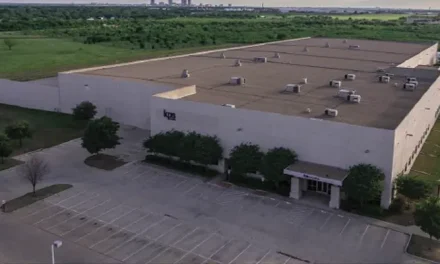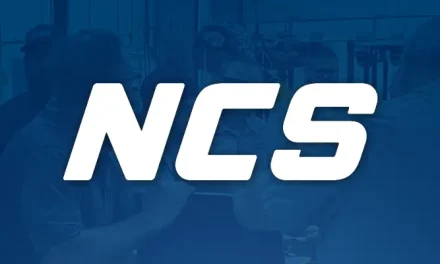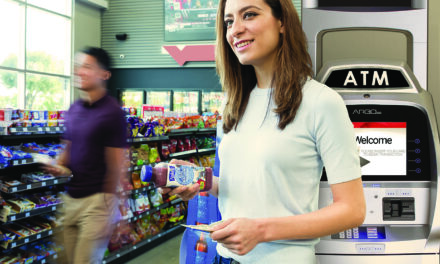
Technology Trends C-Stores Are Borrowing from Restaurants
By Michael McAuliffe
Now more than ever, food service is converging into a single service category as the lines blur between restaurants, grocery and convenience stores. The pandemic’s impact has changed the focus to convenient and safe access to quality food; therefore, the opportunity for c-stores is growing. Especially now, when a stop at the local gas station to fuel up can easily double as a trip out for lunch; the growth of hot and prepared food sales has led to increased operational, safety and compliance procedures, and services have become more complex.
Over the past several years, convenience stores began adopting a number of best practices from the quick-service restaurant (QSR) industry. Many technological advancements can personalize, differentiate, and enhance the customer’s journey thus driving customer engagement and increasing sales all the while building stronger customer loyalty. To ensure a good customer experience while on premise, the c-store must complete daily responsibilities and meet compliance requirements. Digital solutions can be an effective tool to have seamless operations in general. They help cut operating costs and streamline day-to-day tasks for workers, which results in a more efficient business.
Several trends are starting to emerge where restaurant technology is showing up in the convenience store aisles, starting with food safety processes. COVID-19 accelerated the c-store/restaurant convergence, yet convenience stores lag behind restaurants in leveraging technology to automate operational best practices.
Automated food testing and temperature/time monitoring help to ensure food safety and eliminate food waste. Digital checklists are streamlining operations and compliance for c-stores that are beginning to leverage food service software that is proven under fire with thousands of restaurants.
Here are three examples of how convenience stores are borrowing tips and tricks from restaurants. Each example breaks down how the QSR industry solutions can improve c-store operations and food safety requirements as your hot and prepared food offerings grow.
Digital Checklists for Convenience Stores
Digital checklists give employees visibility into the effectiveness of food safety strategies. Previously, tasks used to be recorded manually on paper, which left margin for error. Also, responses to food safety incidents would be delayed due to manual processes. However, a digital checklist gives managers clarity into compliance and operational procedures and tasks such as the creation of prepared meals or the freshness of perishable or refrigerated food.
In restaurants, digital checklists enable easier back of house operations in terms of storing foods, serving, and managing employees. The main priority is to ensure food safety for customers for both restaurants and c-stores. Digitized checklists allow managers to track the food service process and work of each employee. It increases accountability by creating a channel for clear communication, increasing accuracy and allowing managers to easily review completed tasks and offer quick feedback.
Managing workflow can be challenging especially over multiple stores This process is greatly simplified through digital checklists, with quick access and alerts for clear insights into each store’s tasks, or the entire enterprise. The same enterprise food service operation best practices for managing chain restaurants apply to c-stores as well.
Convenience stores are achieving these benefits by deploying digital checklists across the deli, kitchen, café, butcher block, and seafood departments. With a wide variety of prepared and perishable foods prepared on site and sourced from local vendors, making sure each product is uncontaminated and safe to consume is incredibly crucial. Digital checklists offer a solid foundation to ensure food safety both during operations and on the floor. The checklists themselves can be customized to the idiosyncrasies of c-stores and their individual foodservice offerings, helping streamline operations across the board.
Automated Food Temperature Monitoring
In the face of COVID-19, the food services industry continues to prioritize not only their food but customer and employee safety. The convenience store market can follow both the National Restaurant Association as well as the National Grocers Association guidance to strictly follow the Food and Drug Administration’s (FDA) “Best Practices for Retail Food Stores, Restaurants, and Food Pick-Up/Delivery Services During the COVID-19 Pandemic.”
But, here again, the restaurant industry has a laser-like focus on food safety. This year the National Restaurant Association celebrated the 30th anniversary of its ServSafe Food Safety Training program with an education campaign that ran throughout the month of September. The five-week program addressed personal hygiene, cleaning and sanitation, safe food preparation, food safety procedures, and Covid-19 safety procedures.
The restaurant industry solution to food safety is automated food temperature monitoring, which can be especially effective in convenience stores where food inventory is manually checked and logged on paper daily, for multiple coolers, freezers and hot food counters. Wireless temperature sensors can effortlessly keep food safe, and operators receive text and email alerts the instant they are at risk for major inventory loss. With a digital, automated solution to check and record food temperatures, c-stores gain better control with accuracy and safety, along with improved food safety compliance across every location.
Digital checklists can tie together with remote temperature monitoring to further automate the processes, and help restaurants, grocery stores, and other food services operations pass health inspections and audits. Instead of digging through paper-based manager playbooks to find the required information, digital reporting forms are available on-demand.
Contactless Payments and Self Checkout
As convenience stores begin to adapt to more technology in their operations, it opens the door for countless opportunities. Contactless payment has become mainstream, offering greater safety and convenience. Brands have been seeing loyal customers pre-load cash or link their account to a bank or debit account, often in exchange for a sizable fuel discount at the pump with their mobile app. This success has led convenience stores to begin exploring concepts for going cashierless. There are various ways a store can approach the cashierless experience, eliminating the check-out process altogether.
The initial concept of the cashierless store can be credited to Amazon, which offers a customer-friendly solution with technology from Amazon Go, where stores can minimize human-to-human interaction. Shoppers enter the store and scan their mobile Amazon Go app at a glass-gate turnstile, which is also where cameras and other sensors detect which items shoppers pick up and carry out of the store. Their purchases then get charged to whatever payment method the shopper has on file with Amazon.
In addition to contactless payment, the idea of a SmartCart has been in the works, mainly being tested in grocery stores in New Zealand. It has the same concept of the Amazon Go, but instead of sensors picking up bought products as shoppers walk out the door, they’re being scanned as shoppers put them into their carts or baskets. So, every time a shopper puts a grocery item in the trolley, it will be automatically scanned and charged to their account
These technological concepts aren’t completely foolproof yet and are still in the works for broad scale use. There is skepticism surrounding the idea of going cashierless. Regardless, as technology becomes more advanced, it only makes sense for retail establishments to progress along with it.
Overall, new technology within convenience stores will help streamline operations and create better experiences for customers. C-store operators can learn and adopt practices from the restaurant industry to help create more efficient processes.
Michael McAuliffe is vice president of business development at Squadle, Inc., a technology company that enables multi-unit operators to simplify complex operations and streamline food safety.



































